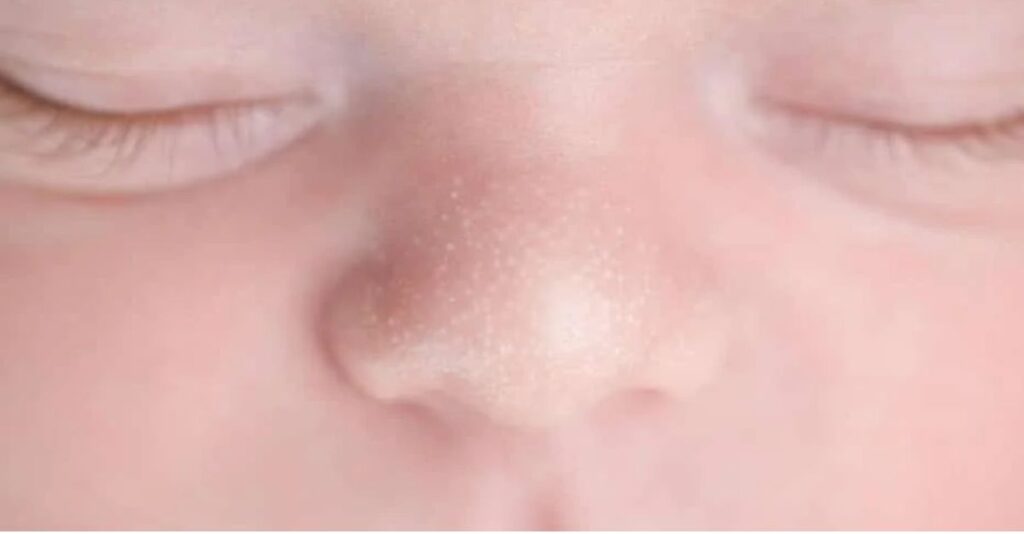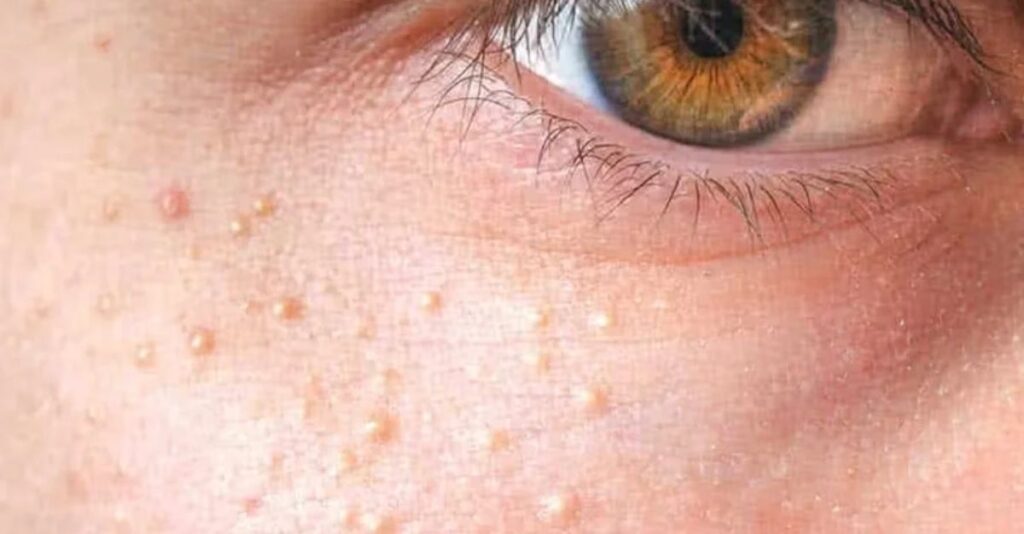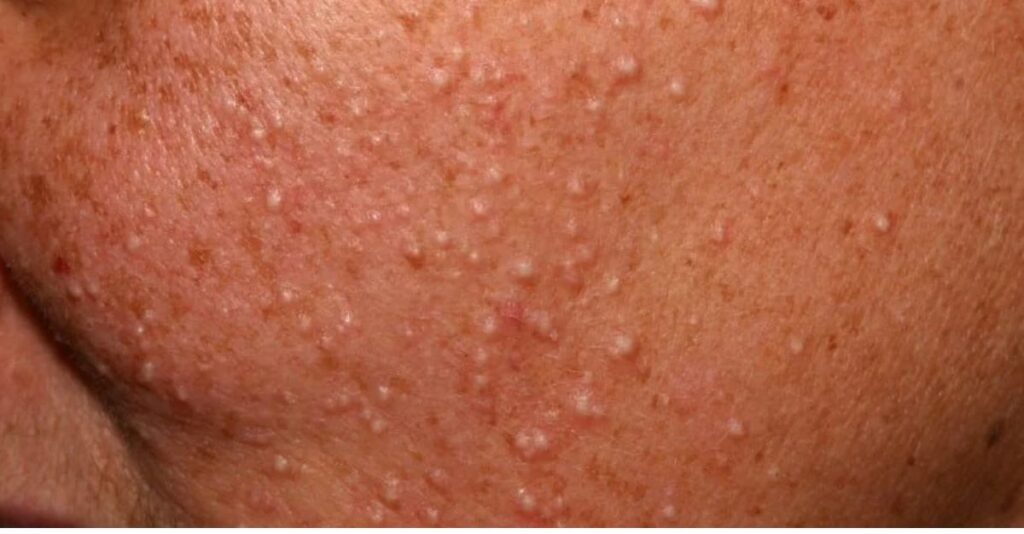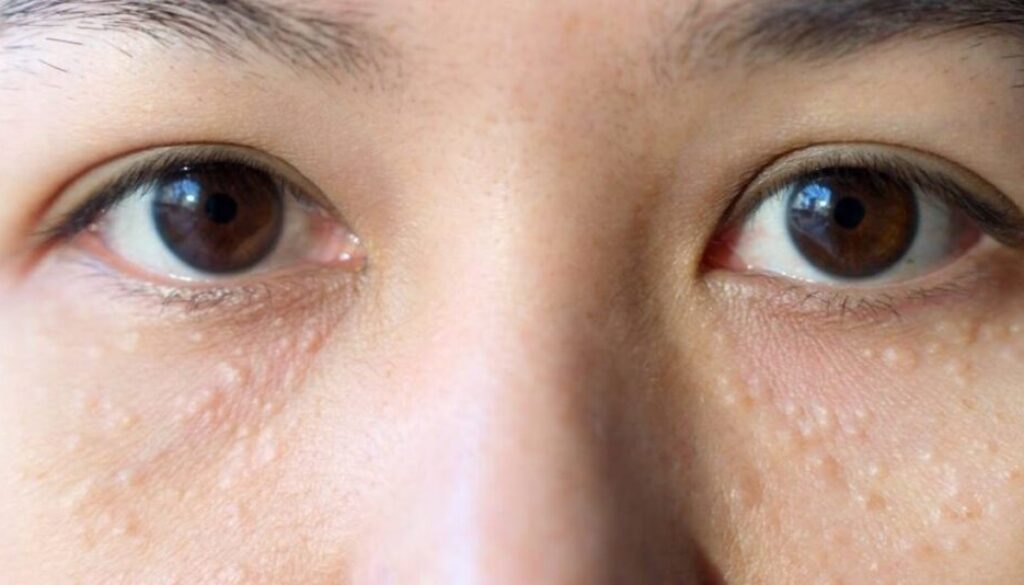Milialar or Understanding Milia: A Thorough Overview
Milialar , Milium, another name for Milia, is a dermatological (Skin disease) disorder marked by tiny white pockets or lumps under the skin’s surface. These little, white warts usually appear in clusters of one to two millimetres on the nose, cheeks, chin, forehead, and eyelids. Often called “milk spots,” Milia is a common skin condition that affects both sexes and is common in a range of age groups, including adults, teenagers, and toddlers. Interestingly, 40–50 out of every 100 neonates born in the USA have this skin disorder, making it a prevalent occurrence among young children as well.
Types of Milia
Understanding the different types of Milia is crucial before delving deeper into the condition.
Neonatal Milia:

- This type is particularly prevalent in newborns, often referred to as baby acne. Neonatal Milia appears in groups on areas like the nose, cheeks, chin, inner cheeks, roof of the mouth, and under the tongue. Although it usually causes no discomfort and tends to vanish within weeks after birth, it may lead to minor irritation.
Primary Milia:

- Commonly affecting children and adults, primary Milia forms clusters on the cheeks, forehead, and nasal crease. While it typically disappears within weeks or months, Milia in genital areas may persist for a more extended period.
Juvenile Milia:
- Inherited from parents or stemming from a genetic disorder, juvenile Milia can lead to various abnormalities, including thick nails, abnormal nail shape, hair growth issues, and sweating. Treatment for this type requires time and consistency.
Secondary Milia:

- Arising after skin damage, secondary Milia is often a result of burns, rashes, infections, or sunburns. It is more likely to affect individuals using skin creams and ointments.
Milia en Plaque:
- This type is associated with an autoimmune skin disorder, causing itching and pain. Commonly affecting pregnant or middle-aged women, Milia en plaque grows in clusters with a larger diameter on areas like eyelids, jaws, cheeks, and the upper abdomen. Proper treatment is essential.
Common Symptoms of Milia
- Small white or light yellow bumps on the skin.
- Bumps forming clusters on raised skin areas.
- Non-itchy and painless bumps, although some types may be painful and irritating.
- Color change to red when exposed to nylon clothing or rough bedsheets.
- Commonly found on cheeks, lips, chin, and eyelids, with less common occurrences in genitalia, inside the mouth, and on the gums.
Causes of Milia Formation
While Milia is generally harmless and transient, the exact causes remain unclear. Factors such as the clustering of keratin protein, sweat trapping, and the presence of dead skin cells near or under the skin are considered possible contributors. Specific lifestyle choices or the use of particular skincare products may also play a role.
In newborns, Milia may result from blocked sweat glands or triggered hormones from the mother, leading to the formation of white cysts on the face, body, and inside the mouth. Additional causes include sunburns, blistering skin, consistent use of skin creams, long-term steroid use, inappropriate laser or skin treatments, and aging.
Treatment of Milia
In most cases, Milia requires no treatment, resolving naturally over time. However, if intervention is necessary, options include Cryotherapy (freezing with liquid nitrogen), deroofing (removal of cyst contents with a needle), chemical peel (peeling off the upper skin layer), and laser treatment. Each method has its merits and considerations, with the choice often depending on consultation with healthcare professionals.
Prevention of Milia
While genetic disorders may be unavoidable, several preventive measures can be taken:
- Use high-quality skin protection lotion to avoid sunburns.
- Moisturize regularly to maintain skin flexibility and prevent hardening.
- Avoid thick creams that may clog pores, leading to Milia and whiteheads.
- Prioritize skin cleanliness to prevent dirt, sweat, and roughness.
Milia vs. Whiteheads
It’s common for people to confuse Milia with whiteheads due to their similar appearance. However, they are distinct conditions:
- Whiteheads result from the trapping of dead cells, bacteria, and oil in skin pores, while Milia forms due to sweat or protein trapping under the skin.
- Whiteheads penetrate deeper into the skin, whereas Milia has no roots in deeper layers.
- Whiteheads are randomly found on nose creases, chin, and cheeks, while Milia occurs in groups on eyelids, chin, and cheeks.
- Hormonal changes and improper skincare cause whiteheads, while Milia results from sweat and protein trapping with resistant skin creams.
Conclusion
In conclusion, Milia is a common skin condition with diverse types and manifestations across age groups. While many cases resolve naturally, severe instances may require treatment. Prevention involves simple skincare practices, and distinguishing Milia from whiteheads is crucial for appropriate management.
Read Also:https://gpmarkaz.com/top-5-best-recipes-for-weight-loss/


